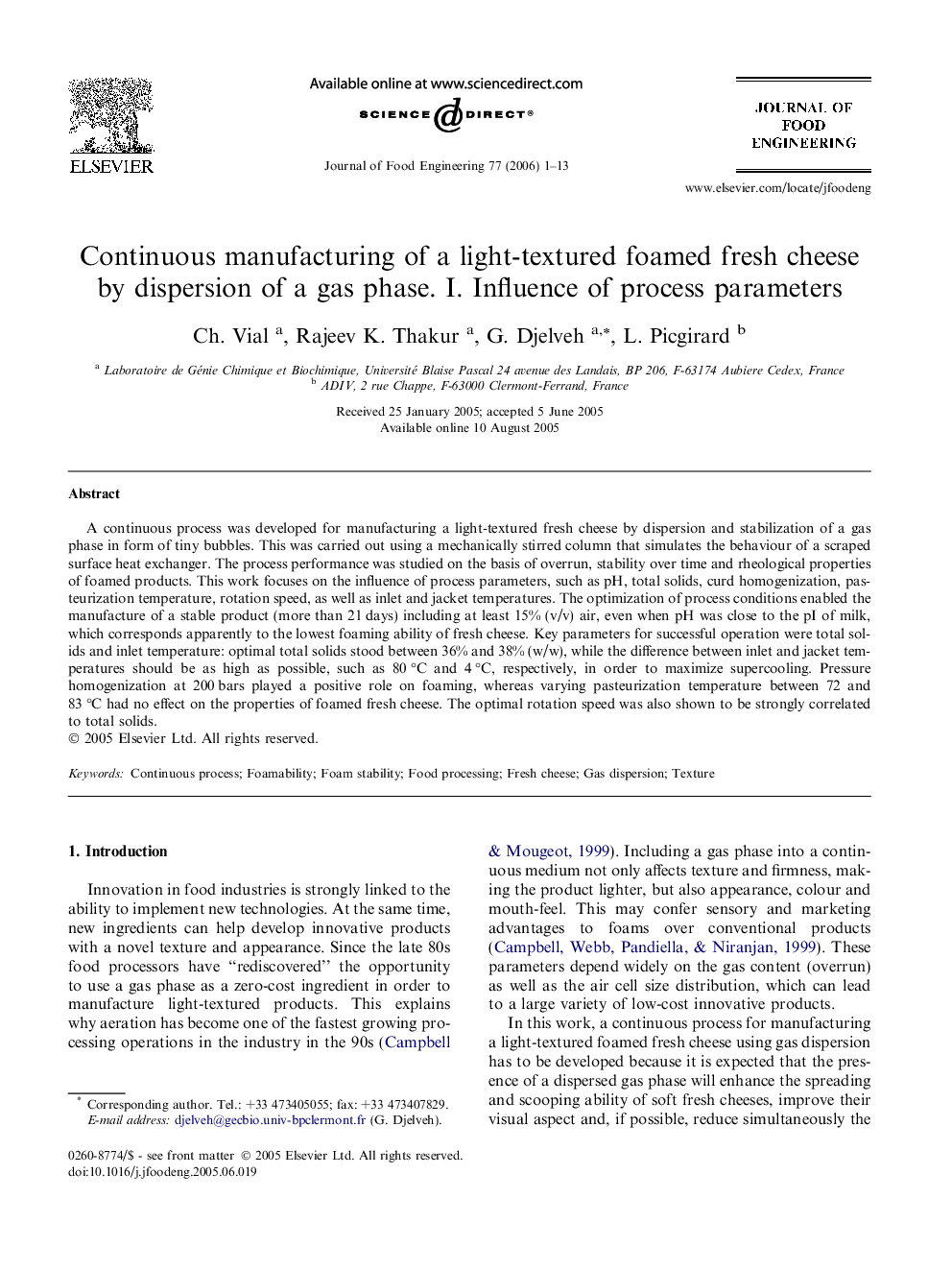| Article ID | Journal | Published Year | Pages | File Type |
|---|---|---|---|---|
| 226592 | Journal of Food Engineering | 2006 | 13 Pages |
A continuous process was developed for manufacturing a light-textured fresh cheese by dispersion and stabilization of a gas phase in form of tiny bubbles. This was carried out using a mechanically stirred column that simulates the behaviour of a scraped surface heat exchanger. The process performance was studied on the basis of overrun, stability over time and rheological properties of foamed products. This work focuses on the influence of process parameters, such as pH, total solids, curd homogenization, pasteurization temperature, rotation speed, as well as inlet and jacket temperatures. The optimization of process conditions enabled the manufacture of a stable product (more than 21 days) including at least 15% (v/v) air, even when pH was close to the pI of milk, which corresponds apparently to the lowest foaming ability of fresh cheese. Key parameters for successful operation were total solids and inlet temperature: optimal total solids stood between 36% and 38% (w/w), while the difference between inlet and jacket temperatures should be as high as possible, such as 80 °C and 4 °C, respectively, in order to maximize supercooling. Pressure homogenization at 200 bars played a positive role on foaming, whereas varying pasteurization temperature between 72 and 83 °C had no effect on the properties of foamed fresh cheese. The optimal rotation speed was also shown to be strongly correlated to total solids.
